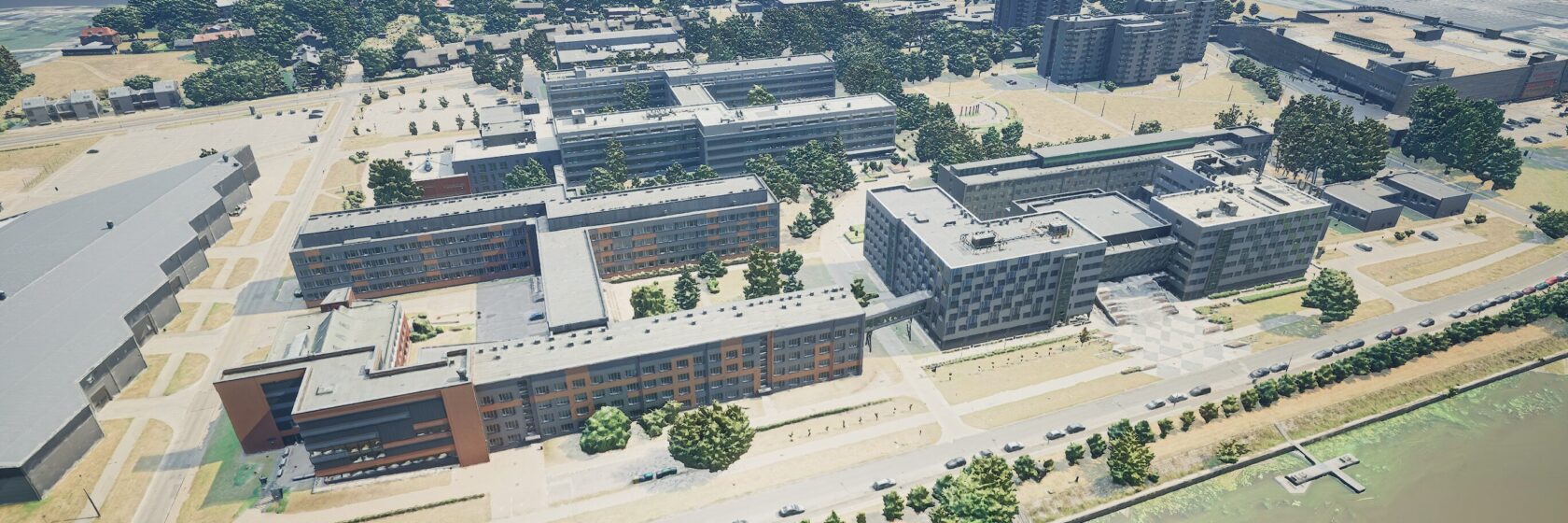Advancing building stock modelling with digital twin-ovation
As cities around the world grapple with the urgent need to reduce carbon emissions and improve energy efficiency, building stock modelling (BSM) has emerged as a vital tool in the pursuit of sustainable urban development.
The ExPEDite project – a multi-partner initiative taking place in Riga, Latvia that aims to create and deploy digital innovations for real-time monitoring, visualisation, and management of Positive Energy Districts (PEDs) – stands at the forefront of this movement, exploring cutting-edge methodologies to optimise energy management on a societal scale.

Understanding Building Stock Modelling
At its core, building stock modelling involves assessing the energy consumption, carbon emissions, and overall performance of building stocks – ranging from individual structures to entire cities. Given that buildings account for approximately 40% of energy consumption and 36% of greenhouse gas emissions across European countries, this process is crucial for shaping effective energy policies and meeting national environmental targets.
The ExPEDite project is dedicated to developing a digital twin framework that facilitates real-time monitoring, visualisation, and management of energy flows at the district level. By integrating these advanced modelling techniques, policymakers and urban planners can better understand the interplay between energy demand and supply, enabling data-driven strategies for achieving energy-positive outcomes.
Key Approaches: Top-Down vs. Bottom-Up
BSM methodologies are typically categorised into two primary approaches:
- Top-Down Models: Provide macro-level insights by analysing aggregated data, such as national energy statistics, to identify overarching trends. While effective for broad policy analysis, these models often lack the detail needed for targeted interventions.
- Bottom-Up Models: Offer high granularity by analysing individual building data to pinpoint specific energy efficiency opportunities. Archetype-based models, in particular, simplify the process by grouping buildings into representative categories, making it possible to model large building stocks with reduced computational demands.
Key Actions for Advancing Building Stock Modelling
To fully realise the potential of building stock modelling in creating Positive Energy Districts, several key actions should be prioritised:
- Enhance Data Collection: Deploy IoT sensors and smart meters to gather real-time data on energy consumption, occupancy patterns, and building performance.
- Integrate Advanced Technologies: Utilise digital twins, GIS, and machine learning algorithms to improve model accuracy and provide actionable insights.
- Foster Collaboration: Engage policymakers, urban planners, energy providers, and local communities to co-create strategies and ensure broad stakeholder buy-in.
- Standardise Modelling Practices: Develop standardised methodologies and open-access databases to facilitate cross-city comparisons and replication of successful models.
- Promote Policy Alignment: Support the adoption of policies that incentivise energy efficiency measures, renewable energy integration, and sustainable urban development.
Leveraging Technology for Precision
Recent advancements in BSM have enhanced the accuracy of energy predictions and carbon assessments. Digital twin technologies and Urban Building Energy Modelling (UBEM) have revolutionised energy management by enabling real-time monitoring and visualisation. Furthermore, integrating machine learning techniques and Geographic Information Systems (GIS) has provided richer datasets, revealing hidden patterns in energy use and improving model precision.
Towards Positive Energy Districts
A key focus of the ExPEDite project is the development of Positive Energy Districts (PEDs) – urban areas that produce more energy than they consume. Achieving PED status requires not only enhancing energy efficiency but also incorporating renewable energy sources, energy flexibility, and sustainable transport solutions. Integrated energy demand-supply modelling has proven to be critical in balancing consumption and production, reducing emissions, and enhancing urban resilience.
Future Prospects: Data, Collaboration, and Action
The path forward necessitates improved data collection methods, such as IoT sensor integration and real-time monitoring systems, to enhance data accuracy and support hybrid modelling approaches. Additionally, engaging a diverse range of stakeholders – from policymakers to community members – is vital to translating modelling insights into actionable strategies.
The ExPEDite project exemplifies the power of advanced modelling frameworks to facilitate evidence-based decision-making, enabling urban environments to transition toward a more sustainable future. As cities continue to innovate, building stock modelling will remain a cornerstone in achieving climate resilience and energy-positive urban development.
